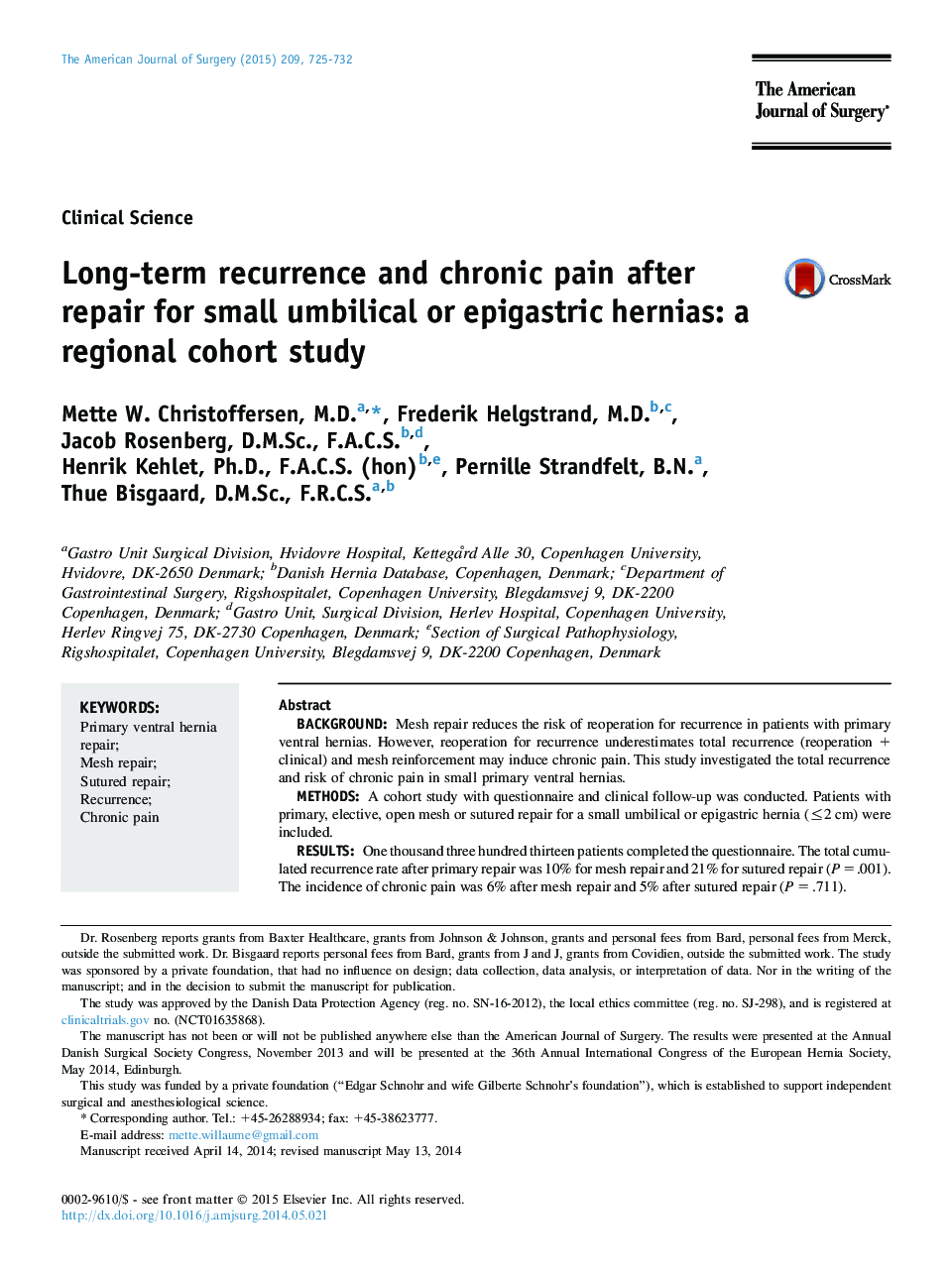| Article ID | Journal | Published Year | Pages | File Type |
|---|---|---|---|---|
| 4278808 | The American Journal of Surgery | 2015 | 8 Pages |
•An operation for a small umbilical or epigastric hernia is one of the most frequent conducted surgical procedures but the long-term risk of recurrence (reoperation or clinical) and chronic pain is unknown.•The optimal repair technique remains controversial, since mesh reinforcement lowers the risk of recurrence but may increase risk of chronic pain.•This study found a high risk of recurrence and documented that mesh reinforcement halved the risk of recurrence from 21% to 10% without increasing the risk of moderate or severe chronic pain of 5%.
BackgroundMesh repair reduces the risk of reoperation for recurrence in patients with primary ventral hernias. However, reoperation for recurrence underestimates total recurrence (reoperation + clinical) and mesh reinforcement may induce chronic pain. This study investigated the total recurrence and risk of chronic pain in small primary ventral hernias.MethodsA cohort study with questionnaire and clinical follow-up was conducted. Patients with primary, elective, open mesh or sutured repair for a small umbilical or epigastric hernia (≤2 cm) were included.ResultsOne thousand three hundred thirteen patients completed the questionnaire. The total cumulated recurrence rate after primary repair was 10% for mesh repair and 21% for sutured repair (P = .001). The incidence of chronic pain was 6% after mesh repair and 5% after sutured repair (P = .711).ConclusionsMesh repair halved long-term risk of recurrence after repair for small ventral hernias without increased risk of chronic pain.
